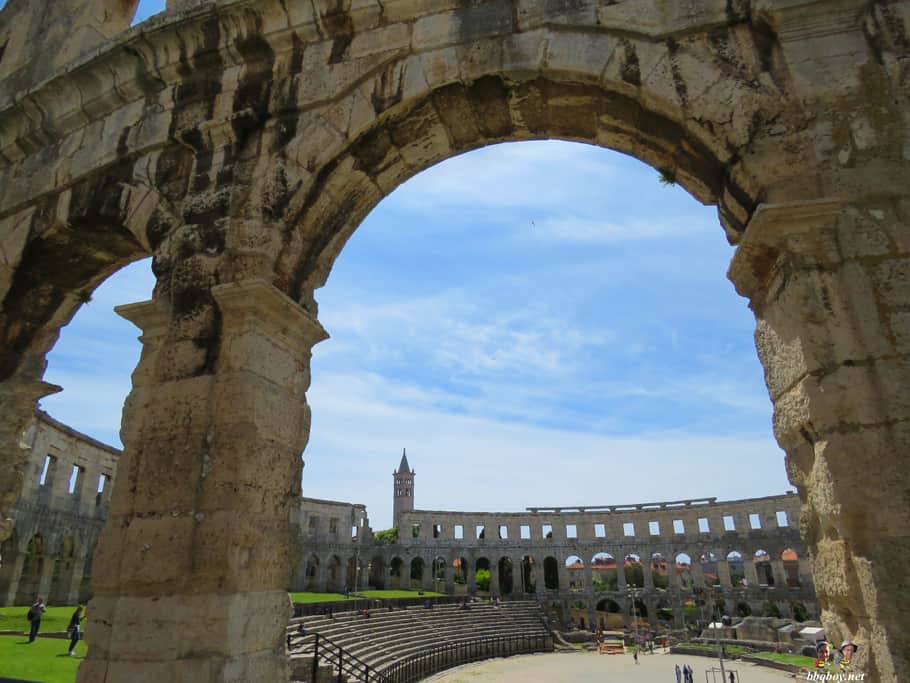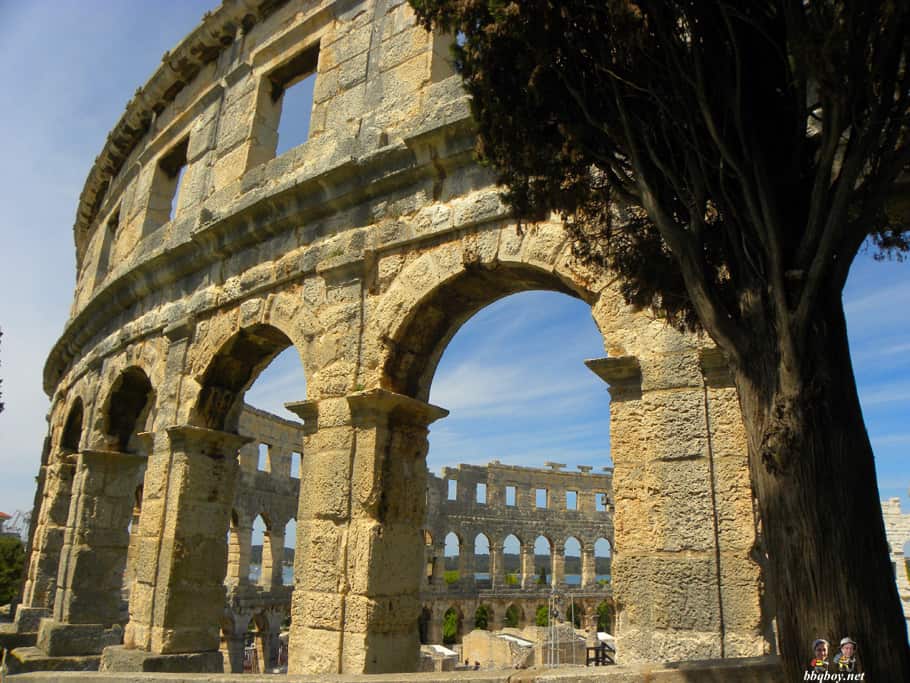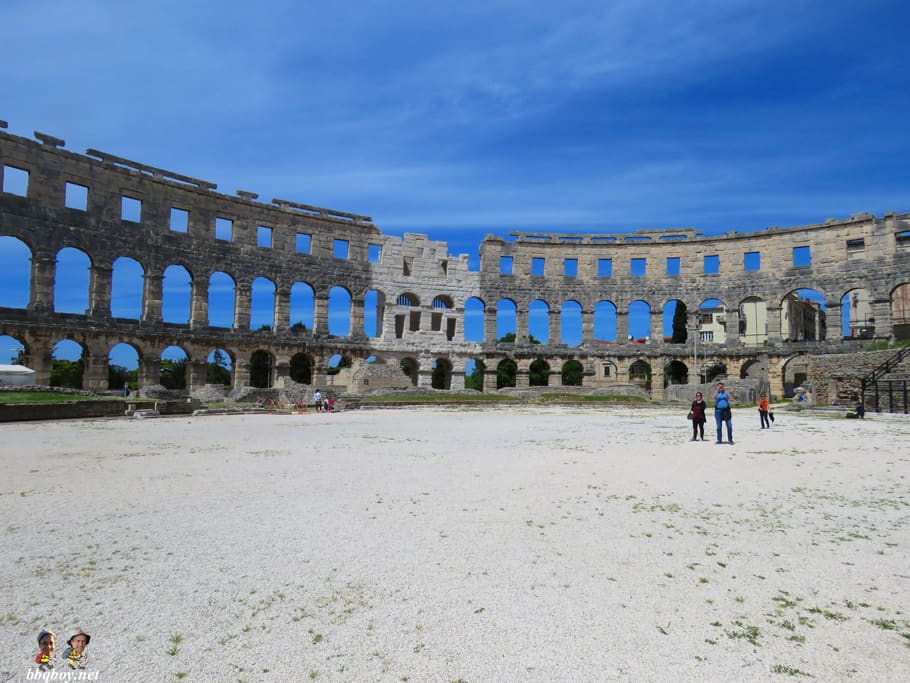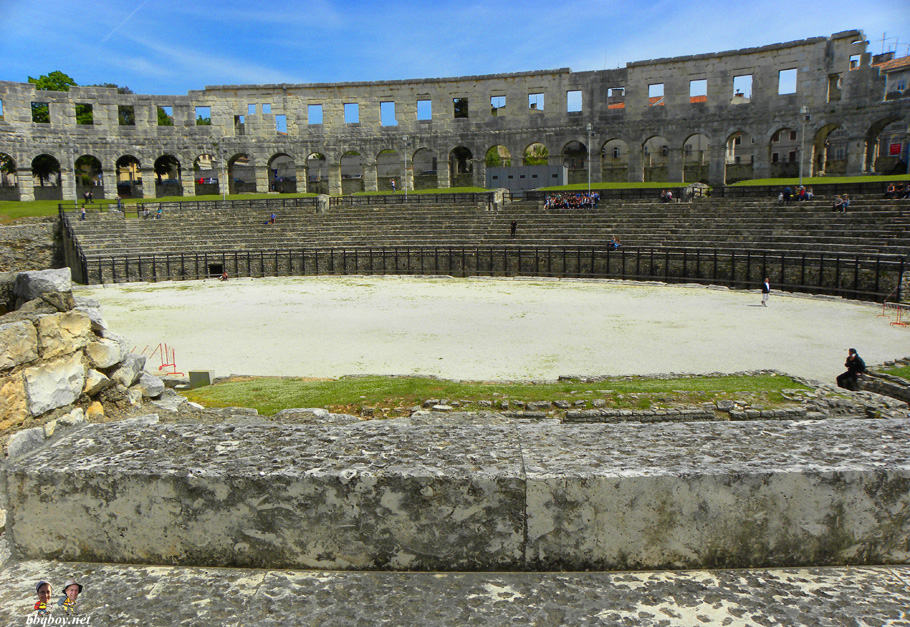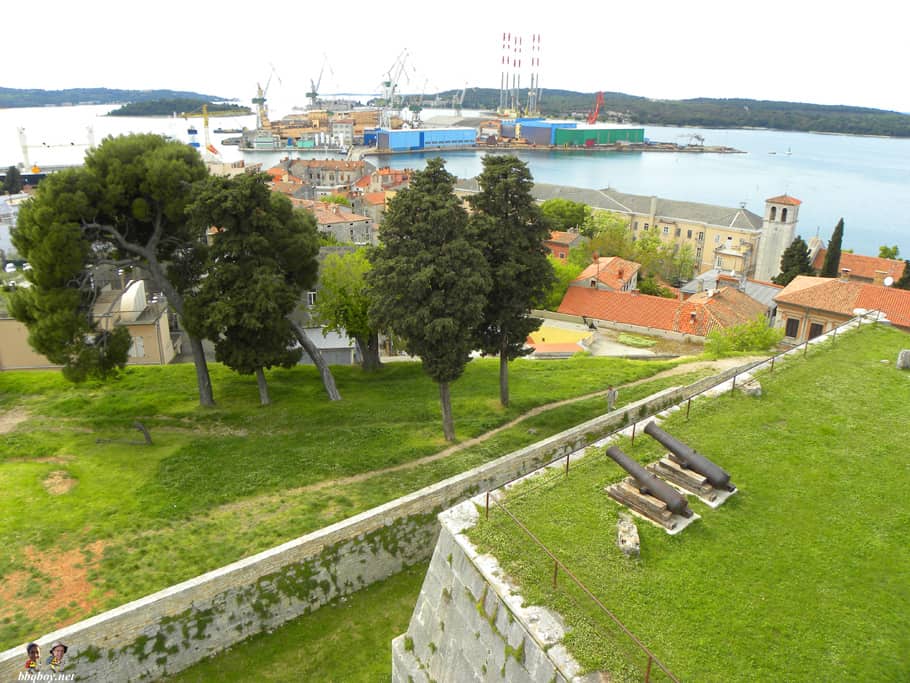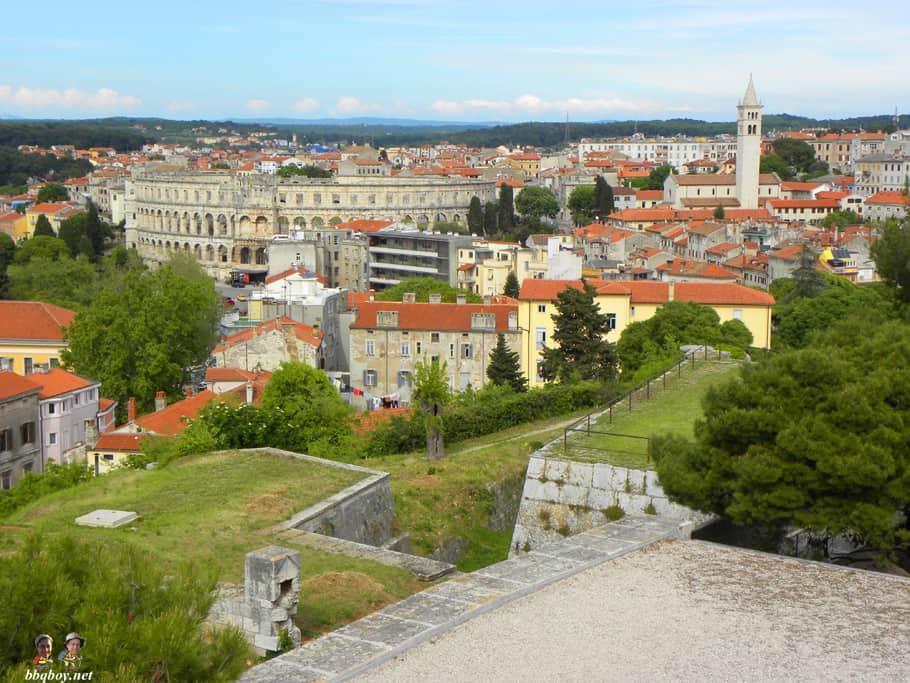If you research the most famous Roman Arenas in the world you’ll usually find these four on the top of most lists: The Colosseum in Rome, the Amphitheatre of El Djem in Tunisia (where ‘Gladiator’ was filmed), the Arena in Verona…and the Amphitheatre in Pula.
We’ve been lucky enough to see 3 of the above over the last month (El Djem being the one we haven’t seen) and it’s interesting how each is different. Before I compare them, a few notes on the Amphitheatre in Pula:
- It was built in the 1st century AD
- it could seat over 26,000 spectators
- it is the 6th largest surviving Roman arena and is considered Croatia’s best preserved Roman monument
- it is used for festivals and performances in the summer months and was even the site of 2 outdoor hockey games featuring professional hockey teams from the KHL.
.
Below: Exterior of the Amphitheatre in Pula.
Exterior: We both agree that the Colosseum is the most impressive from the outside. It’s the largest of the Roman Arenas and is massive. Lissette likens it to a huge, heavy cake. Pula is totally different – the white limestone, huge arches, and the emptiness of the interior give it an openness, a lightness, that you won’t see in other arenas. It is beautiful, but skeletal. What is left of the exterior of Verona’s Arena is not as high as either of the arenas above and is the least impressive (from the exterior) of the 3.
Below: Interior of the Amphitheatre in Pula.
Interior: Here is where Lissette and I don’t agree. I was totally impressed by the Colosseum in Rome, especially looking down at the remains on the tunnels that used to be under the Arena floor. I could imagine the gladiators, slaves and wild animals down there. It must have been sheer terror. Lissette didn’t feel the same thing, maybe because of all the tourists. She liked the interior of the Arena in Verona where you could climb the stairs and have access to the different levels. She could imagine all the people sitting there. I’ll admit that Verona didn’t do anything for me, especially with the modern arena floor in place. There’s not much to the interior of the Amphitheatre in Pula. Much of the interior was broken down over time and used in the building of the rest of the town. But what is special is that you can get right down on the Arena floor, looking up at the few remaining rows of seats and across the Arena. You can almost image a chariot racing towards you.
.
Other factors: Both the Arena in Verona and the Amphitheatre in Pula are still in use for different festivals and performances. The Arena in Verona hosts opera (4 to 6 major productions each summer), ballet and even rock concerts. The Amphitheatre in Pula is used in the same way and has hosted Pavarotti, Bocelli and Sting among others. And as I mentioned, it’s been the site for outdoor hockey games. So they both win points for modern functionality. How amazing would it be to watch the opera in that setting?
The Amphitheatre in Pula is located next to the water, you can look through the arches and see the blue of the sea. That’s pretty special
.
So there are a lot of factors in choosing which might be your favorite arena and we don’t see eye to eye:
Lissette (in order) : Verona, Pula, Rome
Me (in order): Rome, Pula, Verona
So which is your favorite?
Whatever your preference, they’re all special and worth a visit.
.
The town of Pula
We were a bit surprised – negatively – by Pula.
It is the largest city in Istria with a population of about 60,000 and has some impressive sites: the major one besides the Amphitheatre being the Temple of Augustus.
Above: the Temple of Augustus. Built sometime between 2 BC and 14 AD, it was dedicated to the first Roman Emperor Augustus.
.
Above: The main square, with the Temple of Augustus to the left.
.
Above: Pula Cathedral, first built in the 4th century.
In fact Pula has numerous Roman arches and monuments as well as several churches of interest. It also has a castle overlooking the city. So there are enough sites to make Pula worth a visit. The problem is that some really ugly (modern) architecture and lots of industrial installations and port facilities that have ruined the cityscape. Overall, it is not a very attractive place. It’s a real shame.
Below: Arco dei Sergie, built in approx. 28 BC. That’s old.
Below: Views of Pula from the castle at the top of the hill
.
So our verdict on Pula? You have to come and see the Amphitheatre, it is one of Croatia’s highlights. When you’ve done that save an hour or two to walk around and see some of the other sights mentioned above. Overall, a half-day should do it.
.
Have you been to Pula? What did you think of it?
.
The post How Pula’s Amphitheatre stacks up against other Roman arenas. And the sad truth on Pula… appeared first on The Travels of BBQboy and Spanky.


